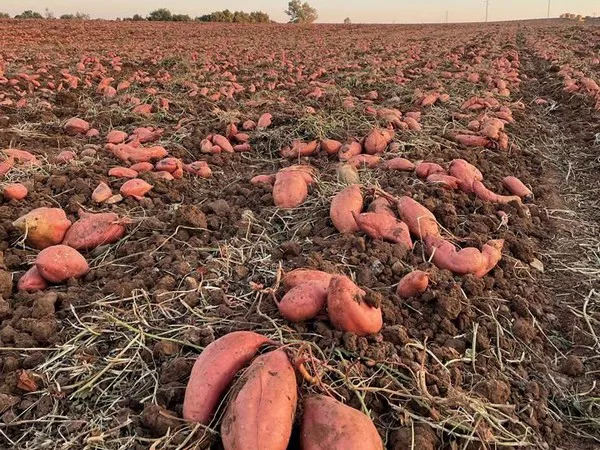According to Francisco Javier Santana, commercial director of Viveros Santana, in 2022, the area planted with sweet potatoes in the Iberian Peninsula has fallen by about 40% because of the poor commercial results achieved in the previous campaign.
Viveros Santana is one of the main producers of sweet potato plants, which also offers a complete service to its customers, helping them to market their crops.

"There's been a drastic change in just one year. There was a very strong drop in profitability that started to be noticeable in 2020 but was more pronounced last year. This discouraged producers from continuing to plant the same amounts of sweet potato, which led to a nearly 40% drop in the area planted," he stated.
Supply has grown considerably in third countries where production costs are substantially lower than in Europe, such as Egypt and Morocco, among other African countries, and in South America.
"At the moment there is so much supply from third countries that prices have collapsed, despite the fact that there is less supply from Spain and Portugal, as well as from the United States, where producers also planted fewer potatoes this year because of the same issue. That's why the Iberian production and marketing companies are keeping their product stored in their cold chambers, waiting for prices to recover, " Francisco Javier Santana stated.

"The United States is also holding their production, supplying its own market more and sending less to Europe, where price has become the main buying factor for operators. The productions of the Netherlands, Belgium, France, and southern Germany have grown in recent years and there are still sufficient quantities, not to mention the supply from Egypt and Morocco, which has very low prices," he added.
According to the commercial director of this Malaga company, the production costs of sweet potatoes have risen by about 25%. "Last year, producers could make a profit if they sold their sweet potato for 75 to 80 cents per kilo, but this year they need to sell them for 1.00 to 1.05 euro per kilo to cover production costs," he said.

The family business from Malaga is in its third generation.
Meanwhile, sweet potato consumption continues to slowly grow every year, he added. However, he said, since the sweet potato has become a luxury product in the stores, the buyers of the large distribution chains have become more demanding about the product's appearance and no longer tolerate small imperfections in its skin. Achieving a perfect-looking product, however, is more difficult given the increase in costs of dealing with pests and the prices being offered for the product. If we extrapolate it to organic farming, the problem becomes more serious," Francisco Javier Santana stressed.
Viveros Santana has 20 hectares of nurseries dedicated to sweet potato plants of the main commercial varieties, half of which come from organic farming and which it supplies throughout Europe.
For more information:
Francisco Javier Santana
Viveros Santana – Plantas de Boniatos
Carretera de Benamargosa, SN,
29700 Trapiche, Vélez-Málaga. España
T: +34 637 566 441
[email protected]
www.boniatos-santana.com
